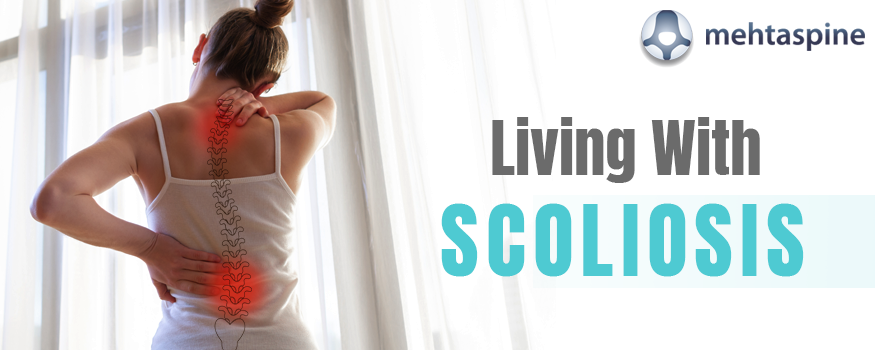Living With Scoliosis
Millions of people around the world suffer from scoliosis, a curvature of the spine. The challenges of living with scoliosis can be both physical and emotional. Nevertheless, given the right tools and mental focus, people with scoliosis can still live satisfying lives. This article examines the lives of scoliosis sufferers, highlighting the obstacles they encounter and methods used to manage life’s complexities.
Understanding Scoliosis
Scoliosis is a medical condition that describes an abnormal curve of the spinal cord in an “S” or “C” shape. However, although some cases are congenital, scoliosis can also appear during growth spurts in adolescence. The curvature also ranges from mild to severe, and so do the symptoms and disability.
- Physical Challenges
There are many difficulties in living with scoliosis. Physical aspects are one of the major challenges associated with scoliosis life. According to the level of this injury, people may suffer from backache, immobility, and muscle imbalance. Activities performed by people daily such as long sitting or aggressive physical exercises may be harder for patients with scoliosis.
- Adaptive Strategies
Scoliotic people have coping strategies, which are adaptive. This may involve particular exercises to enhance core muscle strength and posture. Physical therapy can play an important role in addressing pain and improving flexibility. Other adaptive tools may offer relief and comfort like ergonomic chairs or lumbar supports.
- Emotional Impact
The condition of living with a curve that is visibly seen can also have an emotional burden; the individual may develop low self-esteem and poor body image. However, teenagers, in particular, tend to have increased self-consciousness during a time when fitting in is an important issue. The emotional aspects of scoliosis should be handled through open communication with healthcare providers, friends, and family and also support groups.
- Support Systems
Living with scoliosis in old age needs a good support system. The role of friends and family in providing emotional support, understanding, and motivation is crucial. Whether in-person or online, support groups enable people to interact with others who have gone through similar experiences and thus establish a sense of community and eliminate isolation. In addition, mental health practitioners may provide advice and coping skills to manage the emotional impact of scoliosis.
Treatment Options
The treatment modalities for scoliosis are dependent on the degree of curvature and individual needs. For moderate scoliosis in adolescents, bracing may be advised to prevent further deterioration.
In severe situations, surgery may be necessary to rectify the curved back. Routine visits to healthcare providers, including orthopedic specialists, allow tracking of the condition and the alteration of treatment schemes if needed. Scoliosis correction surgery is another treatment procedure.
Scoliosis does have both physical and emotional challenges, but with the proper support systems in place, one can still live a good life despite the condition. The functions of adaptive strategies, emotional support systems, and a proactive approach to healthcare lead to a holistic strategy of scoliosis management.
With the creation of an environment that promotes awareness and understanding, we can shape a society that is inclusive and empathetic towards people who have scoliosis. Dr Mehta is one of the best spine surgeons providing patients with the best of treatments. Visit the official Mehtaspine website now to avail immediate assistance.


